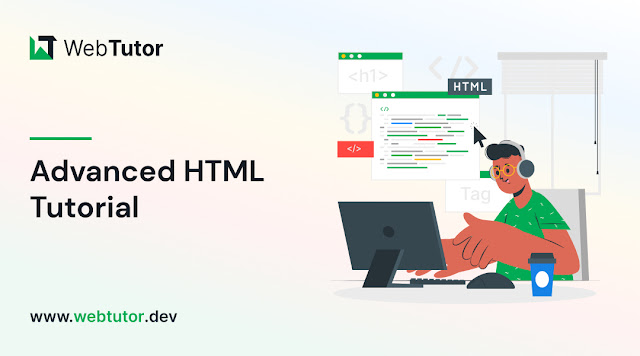Learn HTML Tags with WebTutor.dev: Your Ultimate Resource for Web Development Tutorials
HTML (Hypertext
Markup Language) is the backbone of the web. It is the standard markup
language used to create web pages. HTML consists of a series of tags that
define the structure and content of a web page. In this blog post, we will dive
deeper into HTML tags, what they are, and how they work.
HTML tags are the building blocks of a web page. They are
used to define the structure and content of a web page. HTML tags are
surrounded by angle brackets (<>) and are written in lowercase. There are
two types of HTML tags:
opening tags and closing tags. An opening tag is used to start a tag,
and a closing tag is used to end it. For example, the opening tag for a paragraph
is <p>, and the closing tag is </p>.
HTML tags can also have attributes, which provide additional
information about the tag. Attributes are included in the opening tag and are written
as name-value pairs. For example, the <img> tag is used
to embed an image on a web page. The src attribute is used to specify
the URL of the image. The alt attribute is used to provide a description of the
image for users who cannot see it.
HTML tags can be used to define headings, paragraphs, links,
images, lists, tables, forms, and more. Here are some examples of commonly used
HTML tags:
<html>:
Defines the document as an HTML document
<head>:
Defines the head section of the document, which contains metadata such as the
page title and links to external files
<title>:
Defines the title of the document, which appears in the browser's title bar
<body>:
Defines the body section of the document, which contains the content of the
page
<h1> to <h6>: Defines HTML headings of
different sizes, with <h1> being the largest and <h6> being the
smallest
<p>: Defines a paragraph
<a>:
Defines a hyperlink to another web page or a specific location on the same page
<img>:
Defines an image to be displayed on the page
<ul>
and <ol>:
Defines unordered and ordered lists, respectively
<table>:
Defines a table
<form>:
Defines a form for user input
<br>:
Inserts a line break
<hr>:
Inserts a horizontal rule
<strong>:
Defines text as important or emphasized
<em>: Defines text as emphasized
<blockquote>:
Defines a block of quoted text
<cite>: Defines the title of a work, such as a book or
movie
<code>:
Defines a piece of code
<pre>:
Defines preformatted text, which preserves spaces and line breaks
<sup>
and <sub>: Defines superscript and subscript text, respectively
<div>:
Defines a section of the page for grouping content
<span>:
Defines a small section of text within a larger block of text for styling
purposes
Learning HTML can seem daunting, but with the right
resources, it can be easy and enjoyable. One such resource is WebTutor.dev, an online platform that provides tutorials
on web development, including HTML. The tutorials are easy to follow and
provide a hands-on learning experience. The platform also offers quizzes to
test your knowledge and a community forum to connect with other learners and
ask questions.
In conclusion, HTML tags are the building blocks of a web page. They define the structure and content of a web page and can be used to create headings, paragraphs, links, images, lists, tables, forms, and more. If you are interested in learning HTML, check out WebTutor.dev for easy-to-follow tutorials and a supportive community of learners.



Comments
Post a Comment